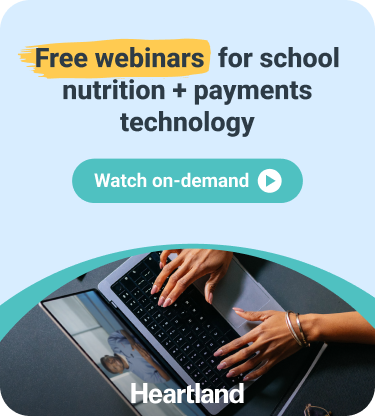
Afterschool Nutrition Programs help millions of low-income students across the country get access to healthy meals they might not otherwise receive outside of school. When districts offer an afterschool nutrition program (ANP), eligible students are able to receive a snack or meal on a weeknight, weekend, and school holiday.
In 2017, more than 46,000 districts participated in ANPs offered through both the Child and Adult Care Food Program (CACFP) and the National School Lunch Program (NSLP). Together, these programs served over 1.07 million children and participation has continued to grow year over year.
Types of Funding Available
Funding for afterschool meals, snacks, and supper programs can come from either the CACFP or NSLP. This funding can be put towards hiring additional staff, purchasing new equipment, providing nutritious meals, and more.
Child and Adult Care Food Program
Both public and private afterschool programs are eligible to participate in the CACFP. Participating afterschool organizations include school food authorities (SFAs), non-profit public institutions (such as libraries), and child care centers. Here are the programs SFAs can receive funding for:
At-Risk Afterschool Meals
This program allows you to receive free reimbursement rates from the USDA for each afterschool snack and/or supper served. Participants must be within the attendance zone of an elementary, middle, or high school and in low-income areas where at least 50% of students are eligible for free or reduced meals. To learn more about the At-Risk Afterschool Meals program, click here.
National School Lunch Program
Contrary to the CACFP, the NSLP only allows SFAs to provide afterschool snacks. Here are the NSLP programs SFAs can receive funding for:
NSLP Area-Eligible Snacks
Similar to At-Risk Afterschool Meals, participants must be within the attendance zone of an elementary, middle, or high school and in low-income areas where at least 50% of students are eligible for free or reduced meals. This program allows you to receive free reimbursement rates from the USDA for each afterschool snack served.
NSLP Afterschool Snacks
This program provides reimbursements for each afterschool snack based on how many free, reduced, and paid eligible students were served. Unlike the Area-Eligible Snack Program, there are no eligibility requirements that need to be met.
To learn more about these program and to see if you are eligible, click here.
Making "Cents" of This
In their 2018 report, the Food Research & Action Center (FRAC) estimated that nearly 2.1 million additional students could have benefited from an afterschool program. When looking at lunch participation among low-income students in October 2017, seven states each missed out on more than $5 million in potential reimbursement in ANPs, had they been offered.
|
State |
Funding Lost (millions) |
Students Not Served |
|
Texas |
$14.8 |
242,575 |
|
Florida |
$9.9 |
163,188 |
|
Georgia |
$7.6 |
124,225 |
|
New York |
$7.3 |
120,419 |
|
Illinois |
$6 |
99,267 |
|
North Carolina |
$5.6 |
91,810 |
|
Ohio |
$5.2 |
85,118 |
Source: FRAC 2018
The positive impact school cafeterias are seeing from afterschool nutrition programs is tremendous. Since afterschool suppers and snacks were introduced statewide to New Jersey in 2016, participation grew over 21% and over 70,000 eligible students are now participating on a daily basis. While there is still a long way to go, officials say that if just 15% of children who eat free or reduced meals ate afterschool food, the state could collect an additional $19.9 million in federal funding.
"It is crucial that communities work together to tap into this and other federal nutrition programs. We know that poor nutrition leads to poor outcomes for kids," said Cecilia Zalkind, president and CEO of Advocates for Children of New Jersey.
On the other side of the country, Redlands Unified School District in California started out serving snacks through the NSLP. After seeing high participation numbers, a few simple changes were made to their cold snack line so they could begin serving full meals branded, as “super snacks”. By switching from serving snacks to meals, they were able to qualify for a higher reimbursement rate. Within one year, they increased their afterschool reimbursements by 250% and expanded the number of sites from six to 22.
Getting Started is Easier Than You Think
If your district qualifies to receive reimbursements, it’s important to take full advantage of the funds available. There are a number of valuable resources that can help you learn more about these programs and see if your district qualifies. Before you proceed with moving forward with an ANP, reach out to your state agency to ensure you are eligible.
Here are some additional resources to help get you started:
Food Research & Action Center
USDA Food and Nutrition Service
Taking into consideration that the average school year runs 36 weeks, and there are more than 85 days of missed meals due to holidays and weekends, many students rely on ANPs for nutritious meals throughout the year. Districts who are aren't offering ANPs may be missing out on an opportunity for additional revenue.
Let us know in the comments below if your district has implemented an afterschool nutrition program and what type of success you've seen!








